How cognitive biases select for imperfect mimicry: a study of asymmetry in learning with bumblebees
- PMID: 31439964
- PMCID: PMC6706088
- DOI: 10.1016/j.anbehav.2018.08.011
How cognitive biases select for imperfect mimicry: a study of asymmetry in learning with bumblebees
Abstract
Imperfect mimicry presents a paradox of incomplete adaptation - intuitively, closer resemblance should improve performance. Receiver psychology can often explain why mimetic signals do not always evolve to match those of their models. Here, we explored the influence of a pervasive and powerful cognitive bias where associative learning depends upon an asymmetric interaction between the cue (stimulus) and consequence (reinforcer), such as in rats, which will associate light and tone with shock, and taste with nausea, but not the converse. Can such biases alter selection for mimicry? We designed an artificial mimicry system where bees foraged on artificial flowers, so that colours could be switched between rewarding or aversive. We found that when the colour blue was paired with a sucrose reward, other cues were ignored, but not when blue was paired with aversive compounds. We also tested the hypothesis that costs of errors affect how receivers sample imperfect mimics. However, costs of errors did not affect bee visits to imperfect mimics in our study. We propose a novel hypothesis for imperfect mimicry, in which the pairing between specific cues and reinforcers allows an imperfect mimic to resemble multiple models simultaneously. Generally, our results emphasize the importance of receiver psychology for the evolution of signal complexity and specificity.
Keywords: Bombus impatiens; floral mimicry; multicomponent signal; overshadowing; prepared learning.
Conflict of interest statement
Declaration of Interest We have no conflicts of interest to declare.
Figures
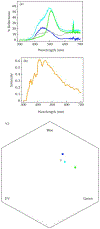
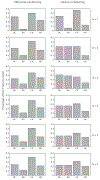
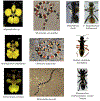

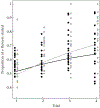

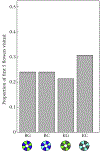

Similar articles
-
Sensory bias and signal detection trade-offs maintain intersexual floral mimicry.Philos Trans R Soc Lond B Biol Sci. 2020 Jul 6;375(1802):20190469. doi: 10.1098/rstb.2019.0469. Epub 2020 May 18. Philos Trans R Soc Lond B Biol Sci. 2020. PMID: 32420844 Free PMC article.
-
Mimicry in motion and morphology: do information limitation, trade-offs or compensation relax selection for mimetic accuracy?Proc Biol Sci. 2021 Jun 9;288(1952):20210815. doi: 10.1098/rspb.2021.0815. Epub 2021 Jun 9. Proc Biol Sci. 2021. PMID: 34102888 Free PMC article.
-
Imperfect mimicry and the limits of natural selection.Q Rev Biol. 2013 Dec;88(4):297-315. doi: 10.1086/673758. Q Rev Biol. 2013. PMID: 24552099 Review.
-
The potential for floral mimicry in rewardless orchids: an experimental study.Proc Biol Sci. 2002 Jul 7;269(1498):1389-95. doi: 10.1098/rspb.2002.2018. Proc Biol Sci. 2002. PMID: 12079663 Free PMC article.
-
The perfection of mimicry: an information approach.Philos Trans R Soc Lond B Biol Sci. 2017 Jul 5;372(1724):20160340. doi: 10.1098/rstb.2016.0340. Philos Trans R Soc Lond B Biol Sci. 2017. PMID: 28533457 Free PMC article. Review.
Cited by
-
Field evidence for colour mimicry overshadowing morphological mimicry.J Anim Ecol. 2021 Mar;90(3):698-709. doi: 10.1111/1365-2656.13404. Epub 2020 Dec 20. J Anim Ecol. 2021. PMID: 33300609 Free PMC article.
-
Mapping the adaptive landscape of Batesian mimicry using 3D-printed stimuli.Nature. 2025 Aug;644(8077):706-713. doi: 10.1038/s41586-025-09216-3. Epub 2025 Jul 2. Nature. 2025. PMID: 40604276 Free PMC article.
References
-
- Adler LS (2000). The ecological significance of toxic nectar. Oikos, 91, 409–420. .
-
- Akaike H (1974). A new look at the statistical model identification. IEEE Transactions on Automatic Control, 19, 716–723. 10.1109/TAC.1974.1100705. - DOI
-
- Bates HW (1862). Contributions to an insect fauna of the Amazon valley (Lepidoptera: Heliconidae). Transactions Of the Linnean Society of London, 23, 495–556.
-
- Berger JO (1985). Statistical decision theory and Bayesian analysis. New York, NY: Springer-Verlag.
-
- Bolker BM (2008). Ecological models and data in R. Princeton, NJ: Princeton University Press.
Grants and funding
LinkOut - more resources
Full Text Sources
